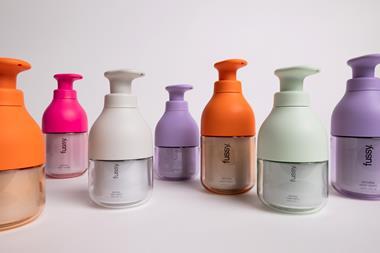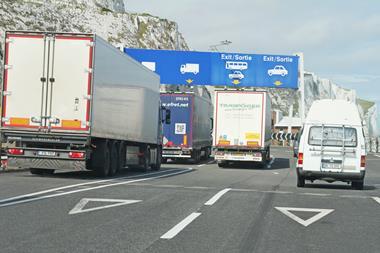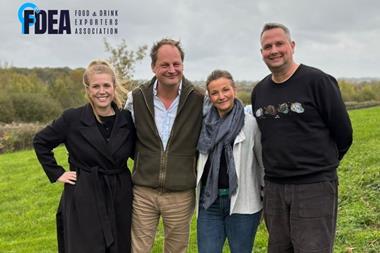Food and beverage producers have experienced a continuing decline in sales coupled with the first decline in profit margins for four years, say OC&C Strategy Consultants in their analysis of the 2001 Coporate Index compiled exclusively for The Grocer The top 150 UK food and beverage producers experienced a decline in combined turnover of 1.9%. in the 2001 Corporate Index. It was the larger companies (with revenues in excess of £100m) that drove this trend, suffering declines of 2.1%, a consequence of the dismantling of diversified food conglomerates and the shedding of underperforming activities. The smaller companies saw a growth in turnover of 1.7% (Table 1). After a steady rising trend that began in 1998, margins took a downturn last year, falling from 7.2% to 6.7%. Average returns on capital employed also fell, to 21.0% from 23.4% (Table 2). Only 40% of the companies in the index succeeded in raising margins, compared to 56% the previous year. Winners and Losers Larger companies continue to outperform their smaller competitors. Companies with revenues in excess of £100m delivered operating margins of 6.9% and returns on capital of 25.9%. Indeed better asset utilisation enabled the larger companies to increase returns on capital slightly, despite falling profit margins. Companies with revenues below £100m produced margins of 4.1% and returns on capital of a lowly 14.2% (Table 4). Yet again the larger companies demonstrated their superior abilities to achieve internal efficiencies, rationalise their plan infrastructure, exploit their distribution structures and so drive capital productivity. As the steady rise in private label penetration reaches saturation, and retailers have sought to achieve a greater balance between producer brands and their own store branded products, the impact of this on private label producers is becoming apparent. The gap in profitability between branded and private label producers widened from 6.0% to 6.7%, and the gap in returns on capital from 15.2% to a massive 18.8%. Branded producers grew sales at 1.9%, while private label producers saw declines of 4.6% (Table 5). Share prices continue to suffer The share prices of the larger listed companies continue to suffer. Over the past three years, Associated British Foods has seen its value decline by 30%; Tate & Lyle has lost over 50% and Uniq 70% of its value. Brake Bros saw a reduction in share price over three years of 25% and Express Dairies has seen its share price fall to one fifth of its value three years ago. Cadbury Schweppes, following a 30% drop in value in 1999, has been one of the few producers to recover significant ground. The growth imperative We are now in an era where top-listed, as well as bottom-line, growth is the biggest challenge facing food producers. OC&C recently spoke to the CEO of a major international food group who said that whereas his predecessor had looked for profit growth to come 30% from value and 70% from price and costs, he would now have to reverse that equation to 70/30. OC&C offers the following growth challenges: - Accept the obligation to grow the category. An outstanding example is Yoplait’s development of fat-free yogurts, spoon-free yogurts for eating on the move, and kids’ yogurts. - Reverse declines. Don’t give up on tired brands. A great example of rejuvenation is Pepsi’s Mountain Dew, transformed from a weak cola alternative to the hip teen drink for boarding and biking. - Change the rules of the category. A good example of “thinking the unthinkable” is Heinz’s easy-squirt green ketchup. Far from making HJ Heinz spin in his grave, this has now given kids ownership of their own line of ketchup. - Invest in food service. Not only is all the growth in consumers’ food expenditure coming through the food service channel, but serving small chains and independent chefs creates an effective incubator of ideas which can be transferred back into the retail channel. One example is Heinz’s extension of the Boston Market brand from food service into retail. - Leverage growth channels and follow the customer. This doesn’t only include petrol forecourts and vending, but may also include important specialist channels e.g. vets and animal dieticians as a way of priming pet food demand. How the Index is Compiled Compiling and interpreting a financial index is a difficult and complex task, especially when the aim is to represent the whole industry. Setting aside the problems of having to depend on the published accounts at Companies House, there are difficulties in deciding which companies to include and which financial measures to use. The objective of The OC&C Corporate Index is to provide a fair representation of the overall financial trends within the industry. While the performance of individual companies is undoubtedly interesting, OC&C urges those analysing individual companies to refer to the set of individual accounts in order to understand the accounting policies being used and the underlying reason for any performance trends. The following definitions and criteria have been used in compiling this index. OC&C has attempted to include those major food manufactures and processors who filed accounts and a representative sample of smaller companies. The resulting group encompasses a wide variety of food industry sectors from, for example, chicken processing to breakfast cereals. For large diversified food companies comprising a few major subsidiaries, such as Unilever, OC&C has listed where possible their major operating companies, such as Birds Eye Wall’s. A number of companies listed in the index have activities outside mainstream food manufacturing and processing. Major firms which have recently been acquired have been retained as a separate listing when separate accounts are filed. Owing to acquisitions, there is the possibility of double-counting when preparing the overall industry composite. Depending on the date of the acquisition and year-end of the acquirer, the latest set of financial accounts may include some of the acquired company’s results. Financial year-ends and speed of filing differ between companies. Rather than attempting to match up accounting periods, the two most recent years have been selected. Caution, therefore, needs to be exercised in comparing companies whose returns and trends span different time periods. In the few cases where companies have changed their year ends, lengthening or shortening their financial year, the sales and profit values have been annualised. This is shown by an asterisk. Definitions Operating profit equals profit before interest and tax, including income from associated companies where relevant. It excludes amortisation of goodwill and exceptional items relating to profit/loss on sale of fixed and intangible assets, reorganisation costs, losses on disposal of operations, cash received and release of provisions from discontinued operations. Operating profit margin (%) equals operating profit divided by sales. Capital employed equals total assets (excluding intangibles) less current liabilities (excluding borrowings). Inter-company balances described as “loans” are classified as borrowings. Return on capital (%) equals operating profit divided by the average of the year-end and previous year-end capital employed. In the few cases where a previous year end capital employed figure is not available, or is not comparable, the year-end capital employed is used. In the few cases where meaningful capital employed numbers are not available for subsidiaries, the return on capital is indicated as “not applicable”. The totals exclude data for such companies. Historical cost accounting conventions have been used, unless only current cost accounts have been filed. While reasonable care has been taken to ensure that stated facts are accurate and opinions fair, OC&C shall not be responsible for any errors or omissions. © OC&C Strategy Consultants 2001 {{FEAT. COVER }}
Close menu
- Home
- Retail & Wholesale
-
Products & Suppliers
- Back to parent navigation item
- Products & Suppliers
-
Product Categories:
- Back to parent navigation item
- Product Categories:
- Alcoholic drinks
- Bakery
- Cereals & breakfast
- Cheese
- Chicken & poultry
- Chocolate
- Confectionery
- Crisps, nuts & snacks
- Dairy
- Fish
- Fresh produce
- Frozen
- Household
- Meat
- Own Label
- Sauces & condiments
- Seasonal
- Soft drinks
- Vaping
- Vegan & plant-based
- World foods
- Suppliers
- People
- Reports & Data
-
Topics A-Z
- Back to parent navigation item
- Topics A-Z
-
Popular topics:
- Back to parent navigation item
- Popular topics:
- Cost of living crisis
- Crime
- Deposit Return Schemes
- Finance
- Government & Regulation
- Health
- Inflation
- Loyalty
- Marketing
- Mergers & Acquisitions
- New Product Development
- Sourcing
- Supply chain
- Sustainability & environment
- Technology
- Ultra Processed Foods
- Vaping
- A-Z all topics
- Content by type:
- Events
- Ask iA (beta)
- Subscribe now
Sign in to comment on this article
Not logged in before? Register for FREE guest access today.
You will be able to:
- Read more stories
- Receive daily newsletters
- Comment on stories
Advert













No comments yet